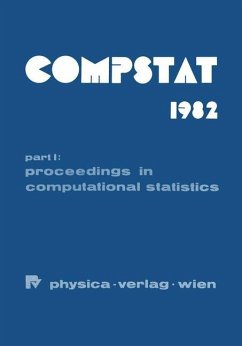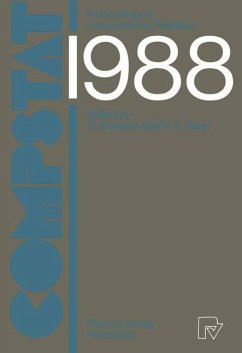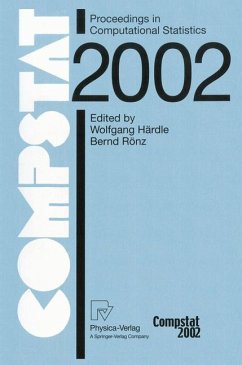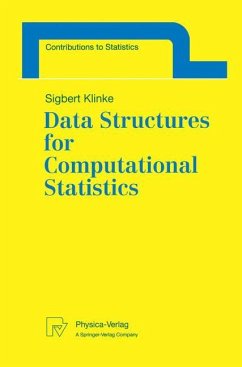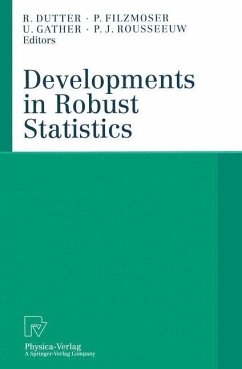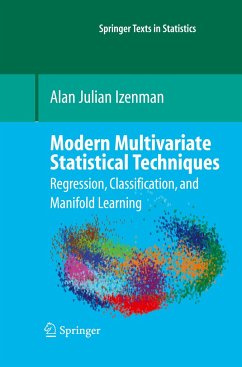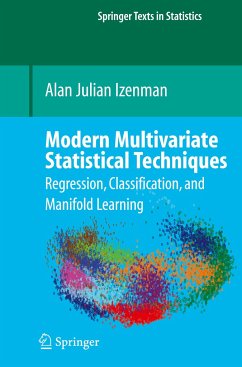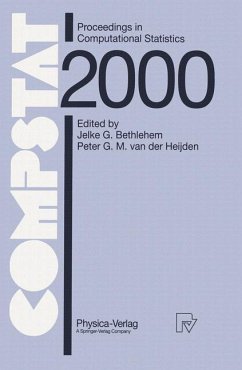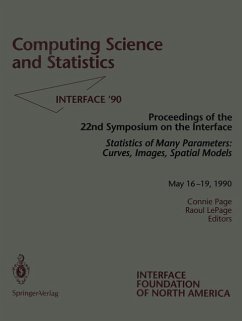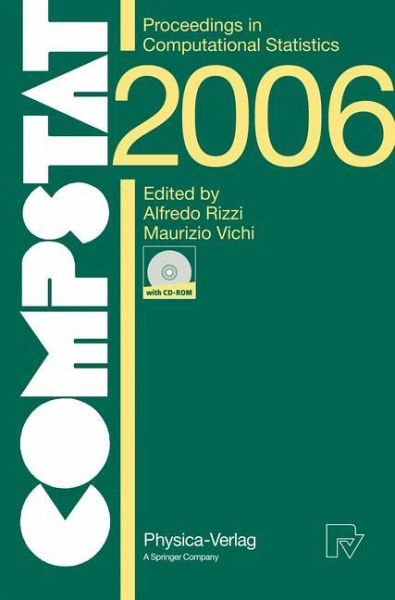
COMPSTAT 2006 - Proceedings in Computational Statistics
17th Symposium Held in Rome, Italy, 2006
Herausgegeben: Rizzi, Alfredo; Vichi, Maurizio

PAYBACK Punkte
57 °P sammeln!
International Association for Statistical Computing The International Association for Statistical Computing (IASC) is a Section of the International Statistical Institute. The objectives of the Association are to foster world-wide interest in e?ective statistical computing and to - change technical knowledge through international contacts and meetings - tween statisticians, computing professionals, organizations, institutions, g- ernments and the general public. The IASC organises its own Conferences, IASC World Conferences, and COMPSTAT in Europe. The 17th Conference of ERS-IASC, the biennial...
International Association for Statistical Computing The International Association for Statistical Computing (IASC) is a Section of the International Statistical Institute. The objectives of the Association are to foster world-wide interest in e?ective statistical computing and to - change technical knowledge through international contacts and meetings - tween statisticians, computing professionals, organizations, institutions, g- ernments and the general public. The IASC organises its own Conferences, IASC World Conferences, and COMPSTAT in Europe. The 17th Conference of ERS-IASC, the biennial meeting of European - gional Section of the IASC was held in Rome August 28 - September 1, 2006. This conference took place in Rome exactly 20 years after the 7th COMP- STAT symposium which was held in Rome, in 1986. Previous COMPSTAT conferences were held in: Vienna (Austria, 1974); West-Berlin (Germany, 1976); Leiden (The Netherlands, 1978); Edimbourgh (UK, 1980); Toulouse (France, 1982);Prague (Czechoslovakia, 1984); Rome (Italy, 1986); Copenhagen (Denmark, 1988); Dubrovnik (Yugoslavia, 1990); Neuch atel (Switzerland, 1992); Vienna (Austria,1994); Barcelona (Spain, 1996);Bristol(UK,1998);Utrecht(TheNetherlands,2000);Berlin(Germany, 2002); Prague (Czech Republic, 2004).






